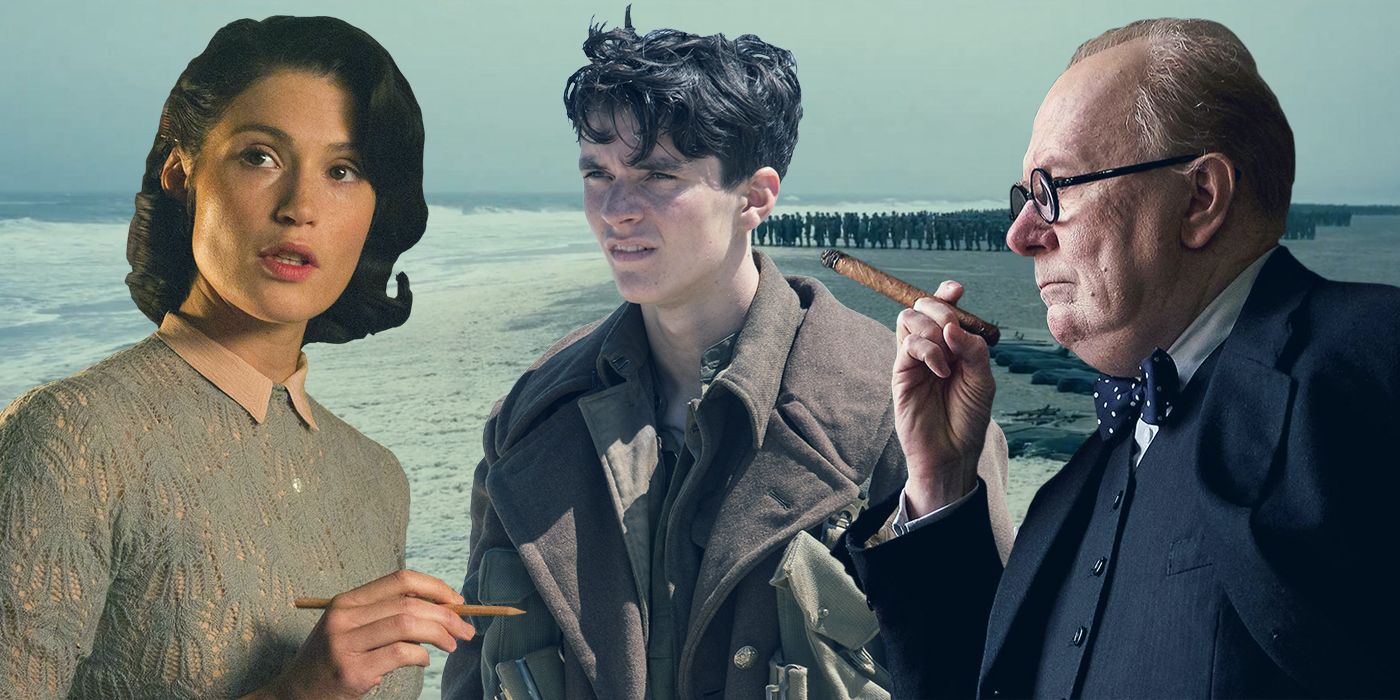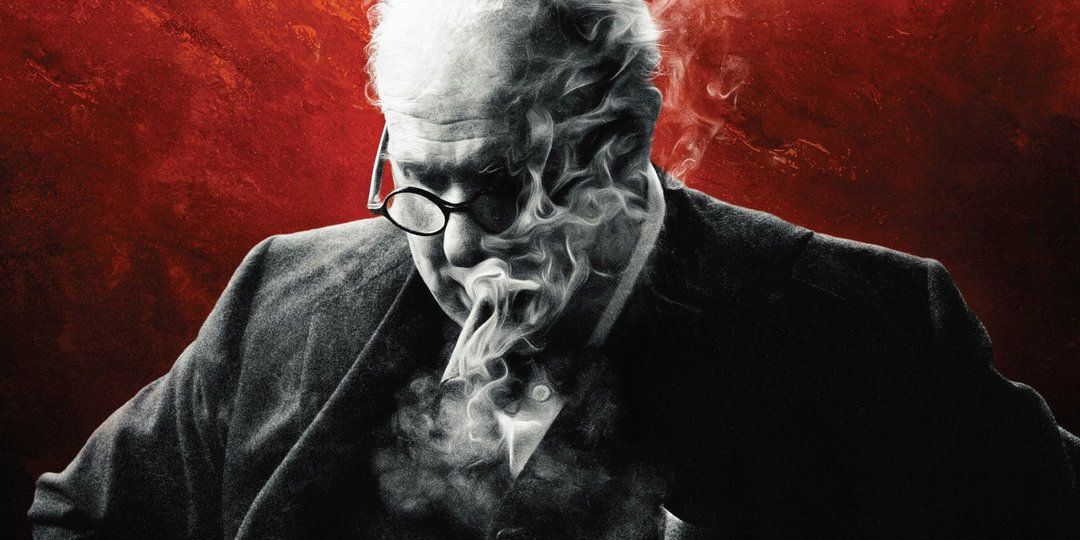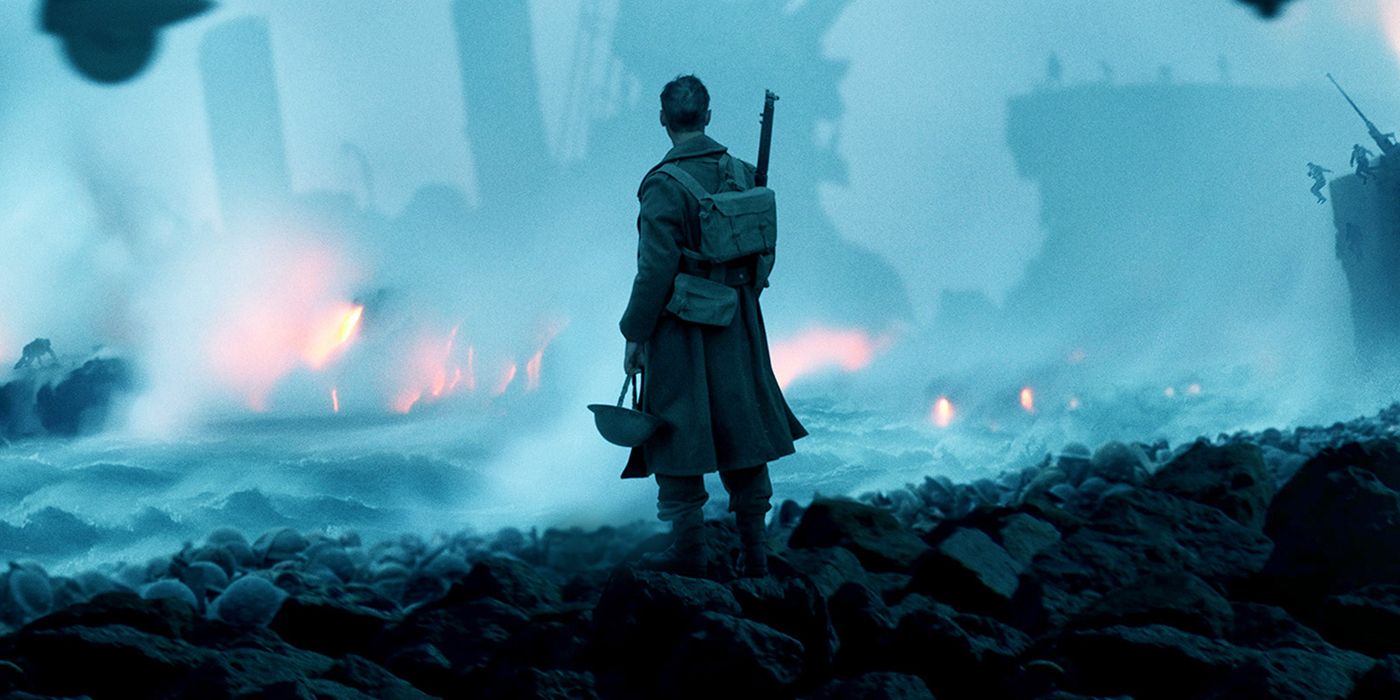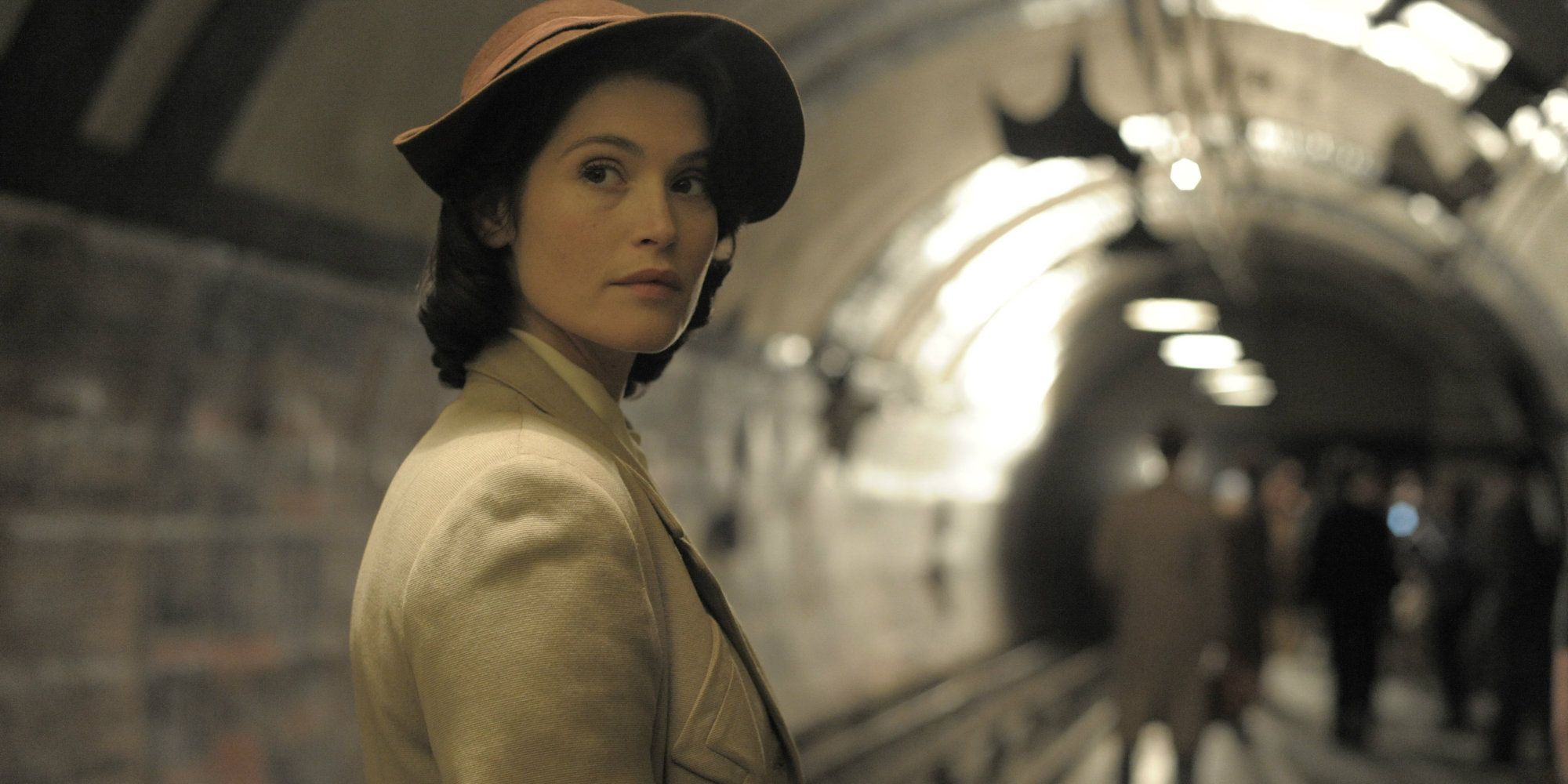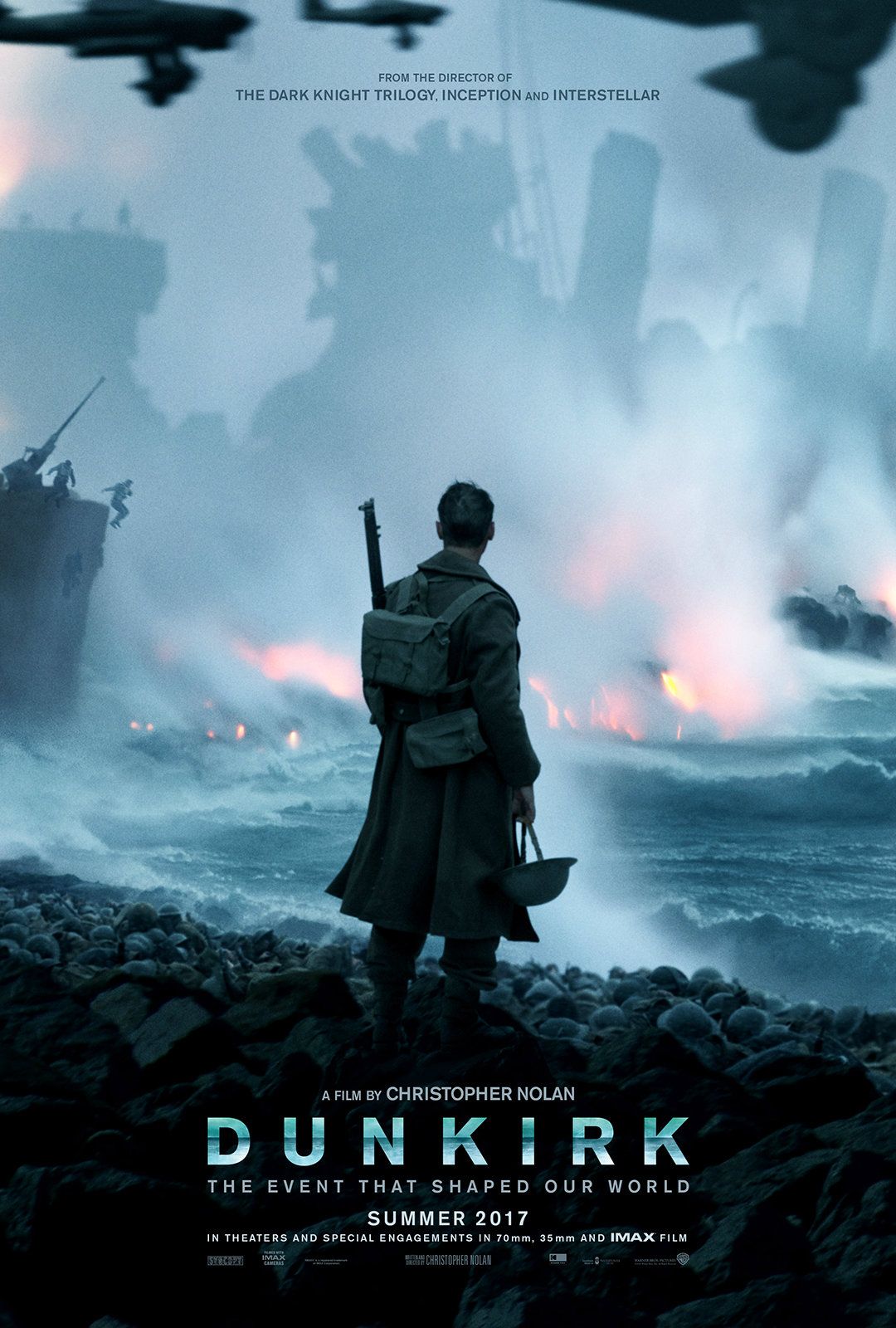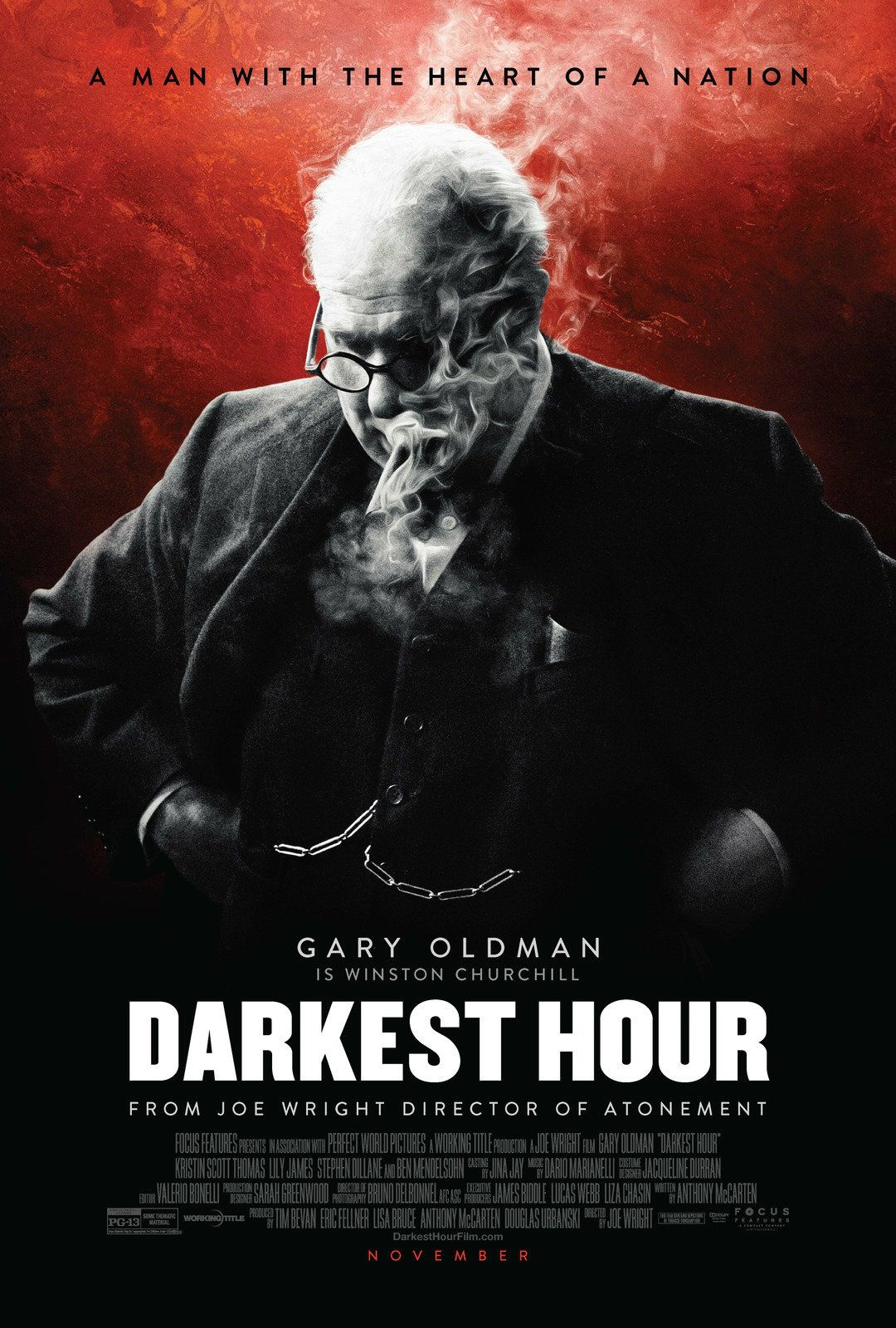2017 is the year of Dunkirk, with three movies released all centered on the evacuation of Allied troops from the French beachside town by British civilians: first came Lone Scherfig's Their Finest, which documents a British propaganda film crew creating a slightly fictional take on the Dunkirk rescue in order to boost national morale; in July, Christopher Nolan's Dunkirk explores the fierce brink of evacuation itself; and now, Joe Wright's Darkest Hour centers around British Prime Minister Winston Churchill's decision leading up to how the Dunkirk evacuation ought to be handled.
Releasing in the same year was, of course, a coincidence, but a very lucky one that leads to an unofficial trilogy that makes for a very unique viewing experience. However, watching the films in the order in which they were released offers up a bit of a nonlinear timeline. Here's the best way to watch 2017's Dunkirk trilogy (as well as an exploration of why they work so well together).
Related: Dunkirk's Ending Explained
Darkest Hour - The Politics
The tale of Winston Churchill's early days as Prime Minister may have been released later in the year, but it really should be the first part of the trilogy. In the film (directed by Joe Wright, who already tackled Dunkirk in Atonement), Gary Oldman's Churchill is at odds with his colleagues (and the rest of the world, for that matter), debating whether or not he will negotiate with Adolf Hitler. This decision ultimately sealed Great Britain's fate, and specifically the lives of the 400,000 soldiers trapped at Dunkirk.
As star Ben Mendelsohn said, he viewed the film as a "bookend" to Dunkirk, explaining the backdrop of the intense, context-less war movie. However, given how removed it is from the conflict itself and more establishing the early-war desperation, in practice, it's the ideal scene-setter for what's next...
Dunkirk - The War
There have been war movies that place the audience directly on the frontlines, but Christopher Nolan's Dunkirk breaks a new mold. His film transcends traditional narratives, opting for a unique, nonlinear slice of WWII that is as frenetic as it is unsettling.
That structure means it could really fit anywhere in the viewing order, but as the most visceral entry feels like it belongs at the center - a harsh reminder of what was at stake. There's even a wonderful mirror to Darkest Hour's closing speech, with it this time read by one of the exhausted survivors.
Related: Christopher Nolan Wanted to Film Dunkirk Without a Script
Their Finest - The Civilian Impact
Although war is still raging in Their Finest, the film takes place well after the Dunkirk evacuation, exploring its impact on the British public against the backdrop of the Blitz. The British Ministry of Information is preparing a propaganda film based on Operation Dynamo to boost morale in England (and to show both their enemies and allies that Great Britain remains strong and resolute); a fake story that echoes the confusion over their heroism of the soldiers in Dunkirk.
While this is in many ways a light "making-of" romantic comedy sprinkled with moments of genuine grief, it has strong ties to the event itself and, after a look at the political and military, feels like the perfect coda.
-
Of course, because these films each explore distinct viewpoints of Dunkirk, they could be watched in any order. You could start with the legacy of Their Finest, then cut to political strife of Darkest Hour before rounding with the true, intense realism of the fight with Dunkirk, for example. However, for our money, this is the optimum viewing order.
Next: The Real History Behind Dunkirk

